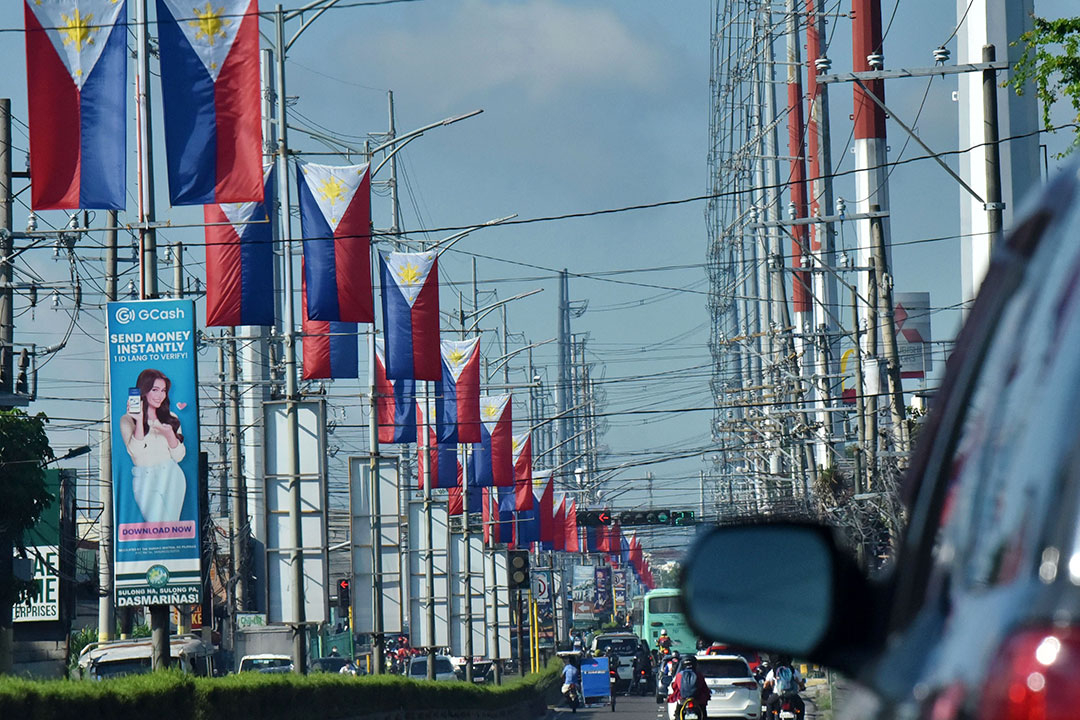




Quarterly Economic Growth Release: More BSP cuts to come
 DOWNLOAD
DOWNLOAD

Monthly Economic Update: Fed catches up
 DOWNLOAD
DOWNLOAD

Inflation Update: Steady and mellow
 DOWNLOAD
DOWNLOAD


Foreign investment pledges surge in Q3

Foreign investment pledges approved by investment promotion agencies (IPAs) more than doubled in the third quarter from the same period a year ago, the Philippine Statistics Authority (PSA) reported on Tuesday.
Total foreign investment commitments surged by 109% to PHP 27.3 billion in the July-to-September period from the PHP 13.05-billion haul a year ago.
The growth in foreign investment pledges was the fastest in two quarters or since the 4,455.6% surge in the first quarter of 2023.
Quarter on quarter, foreign investment commitments slumped by 54% from PHP 59.09 billion in the second quarter.
Singapore was the biggest source of approved investment commitments, contributing nearly half at PHP 13.04 billion. This was followed by Taiwan and the United Kingdom with pledges amounting to PHP 3.63 billion (13.3% share) and PHP 3.06 billion (11.2% share), respectively.
Analysts said the annual increase in pledges in the third quarter reflected the government’s efforts to attract more foreign investors.
“This may have come from the push of the government to continue to attract foreign capital into the country. The plan is for more foreign pledges to come in and the hope is for this to come into full fruition,” Union Bank of the Philippines, Inc. Chief Economist Ruben Carlo O. Asuncion said in a Viber message.
China Banking Corp. Chief Economist Domini S. Velasquez said recent economic reforms and trade deals may have helped boost the country’s attractiveness to foreign businesses.
“The year-on-year increase in approved foreign investments likely reflected the impact of the government’s liberalization reforms and trade agreements which have opened up the country to more foreign participation,” she said in a Viber message.
On the other hand, Ms. Velasquez attributed the 54% quarter-on-quarter drop in pledges to the “challenging macroeconomic conditions” here and abroad.
“The weaker-than-expected second-quarter gross domestic product (GDP) performance may have also had a negative impact on investor sentiment,” she said.
Philippine GDP grew by a weaker-than-expected 4.3% in the second quarter, slowing from 6.4% in the first quarter and 7.5% in the same period in 2022. This was the weakest growth print since 2011.
“It’s good that foreign investment pledges grew in the third quarter year on year. Nonetheless, we still saw a decline in real investment from the last third-quarter GDP print release. We still are on the lookout for actualization of these pledges in the immediate future and help contribute to GDP growth soon,” Mr. Asuncion said.
Only seven out of 13 IPAs reported foreign investment pledges for the third quarter. IPAs are authorized by law to provide tax and nontax benefits to investors building new enterprises or expanding current ones in priority sectors.
The Philippine Economic Zone Authority accounted for 67.1% of total approved foreign investment commitments in the third quarter with PHP 18.33 billion.
Other IPAs that recorded pledges include Subic Bay Metropolitan Authority (PHP 4.11 billion), Board of Investments (PHP 3.74 billion), Clark Development Corp. (PHP 968.17 million), Zamboanga City Special Economic Zone Authority (PHP 112.31 million), Authority of the Freeport Area of Bataan (PHP 35.25 million), and Cagayan Economic Zone Authority (PHP 4.97 million).
More than half (60%) or PHP 16.43 billion of the approved foreign pledges will go to the manufacturing industry, while PHP 4.28 billion will be allotted for administrative and support service activities, and PHP 4.22 billion for real estate activities.
Meanwhile, Calabarzon (Cavite, Laguna, Batangas, Rizal, and Quezon) cornered the bulk of foreign investment commitments in the third quarter with PHP 14.56 billion.
Central Luzon accounted for 22.4% with PHP 6.13 billion, while Central Visayas made up 14.2% with PHP 3.87 billion.
Meanwhile, total combined investment pledges of foreign and Filipino nationals fell by 47.6% to PHP 83.5 billion in the third quarter from PHP 159.38 billion last year.
Investment commitments by Filipinos accounted for 67% of the total with PHP 56.19 billion.
Should the commitments of both foreign and local investors materialize, these projects are expected to generate a total of 22,571 jobs. This is 20.7% lower than the 28,485 expected employment from investment pledges seen in the third quarter of 2022.
Ms. Velasquez said there is a potential for foreign investments to improve in the next few months, as third-quarter GDP growth showed the economy’s resilience.
The Philippine economy grew by 5.9% in the third quarter, bringing the year-to-date average to 5.5%. The government is targeting 6% to 7% GDP growth this year.
“We also expect economic conditions to become more favorable for investments, especially next year. The jump in public infrastructure this year, and planned infrastructure spending in the medium term, will likely provide a ‘crowding in’ environment for investors,” she said.
PSA data on foreign investment commitments, which have yet to materialize, differ from actual foreign direct investments tracked by the Bangko Sentral ng Pilipinas for the balance of payments. The central bank’s monitoring goes beyond the projects and includes other items such as reinvested earnings and lending to Philippine units via their debt instruments. — A.C. Abestano
This article originally appeared on bworldonline.com





 By BusinessWorld
By BusinessWorld